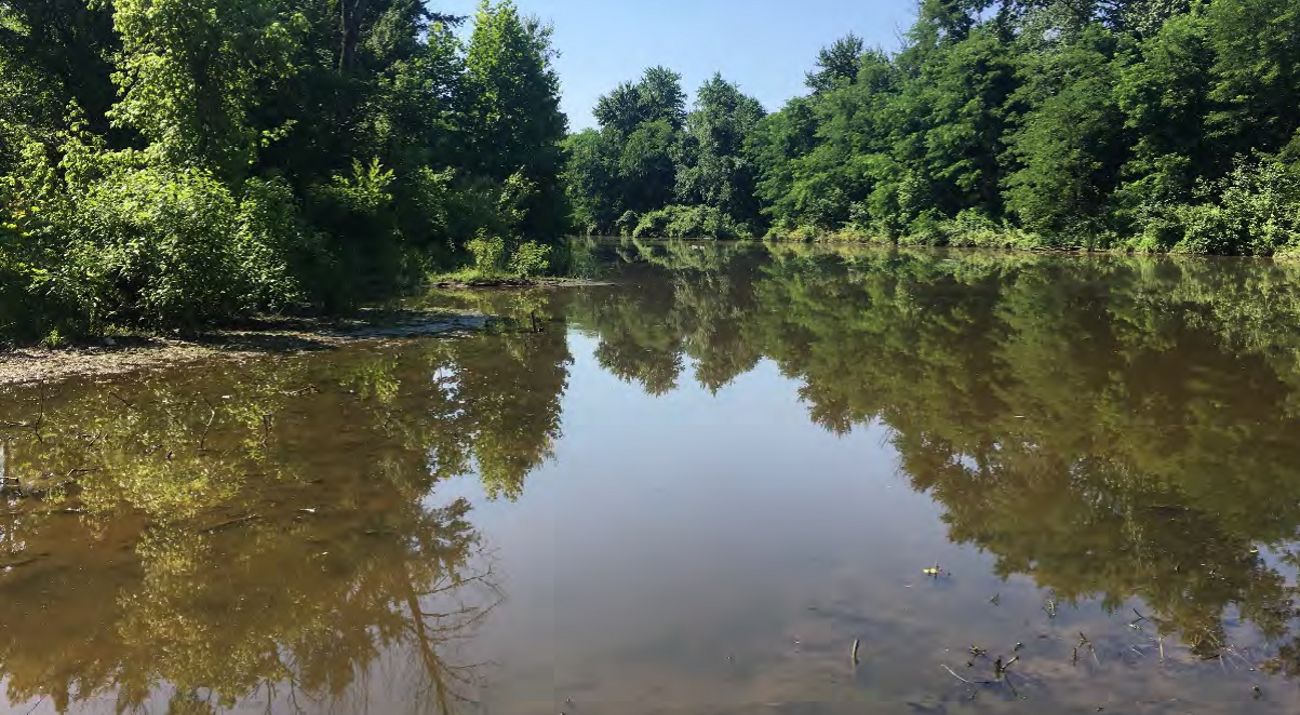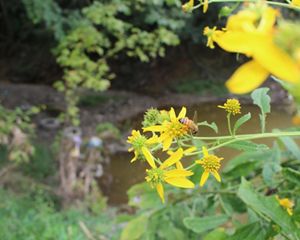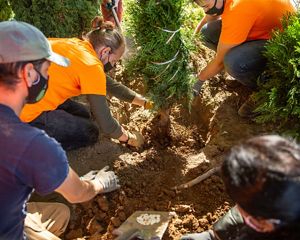Restoring Mill Creek
Bennett Knox works with TNC to create more opportunities for people and nature in Louisville.
Bennett Knox grew up on a farm next to Elkhorn Creek in Scott County, Kentucky. He spent his childhood exploring the 100-acre farm with his dogs and cats. Once he had the opportunity to study natural resources in college, he took it.
Majoring in natural resources conservation, he went to the University of Kentucky for his undergraduate degree. He went to Duke University for graduate school in resource ecology, focusing on forest ecology. He was working for an environmental consulting firm in northern Virginia when he and his wife decided to move home to Kentucky.
Joining Louisville Metro Parks
“I was in the right place at the right time when this job opened,” says Knox, who is now the parks administrator for the Natural Areas division of Louisville Metro Parks. “It was exactly what I was looking for out of graduate school with my degree. I’m really thankful to be doing what I went to school to do.”
While Knox’s background is resource management, he has had to learn a lot of skills beyond that. His job entails managing Jefferson Memorial Forest, environmental education, maintenance, planning and resource management.
“It’s pretty great to have a role in all of those different areas and to develop synergy among them,” says Knox. “It’s great to be able to sustain projects over a long period of time.”
Knox says his favorite part of the job is working with partners to try to move the needle on issues such as equity. “Right now, the most focused thing we’re doing is to increase equity in the outdoors,” Knox says. “We’re working in west Louisville, and particularly working with youth.”
The most challenging part of his job is working within the constraints of government, particularly with funding challenges. That’s why partnerships are so important, Knox says. Partnering with The Nature Conservancy has brought new resources to conservation in Louisville.
Quote: Bennett Knox
When TNC reached out to see if we could partner, that was a great day.
Partnering with TNC on Urban Conservation
The Nature Conservancy began working on its Mill Creek project in Louisville in 2017. The project seeks to enhance the ecology of the 34-square-mile basin in southwest Louisville. The land surrounding Mill Creek is owned by Louisville Metro Parks, so the partnership was a natural part of the project.
“Mill Creek is interesting because it’s been a kind of land bank, but there wasn’t money available to look at developing it for passive recreation and environmental habitat improvement,” Knox says. “When TNC reached out to see if we could partner, that was a great day.”
The partners are working with the Kentucky Department of Fish and Wildlife Resources stream mitigation team to explore the possibility of restoring the watershed with mitigation funding. Louisville Metro Sewer District is another partner in the project.
“TNC was the partner that brought everyone together around a new project,” Knox says. “So that’s been really exciting.”

Opportunity at Mill Creek
The revitalization of Mill Creek could result in a 1,000-acre park in southwest Louisville. This would help connect existing protected areas for even more recreational opportunity.
“From my position at the Jefferson Memorial Forest, we’ve been trying to focus on this idea that southwest Louisville has great natural assets,” Knox says. “We’ve been promoting tourism there.”
Mill Creek would add additional acreage to several areas already open for recreation in southwest Louisville, including Jefferson Memorial Forest, the Ohio River, Iroquois Park, and Riverside, the Farnsley-Moremen Landing.
“Add a 1,000-acre park and we’re talking about upwards of 10,000 acres of green space that’s going to be increasingly connected,” says Knox. “Going in and restoring woodlands there is really going to provide residents with an additional place to go for passive recreation.”
Knox says working with TNC has brought new expertise to the project area. “We don’t do a lot with mitigation credits, and that was some expertise that Chris Chandler brought to the table,” Knox says. “Catherine Fitzgerald really brought some great knowledge as we were looking at resources along Mill Creek. So it’s been fantastic to work with great professionals.”




